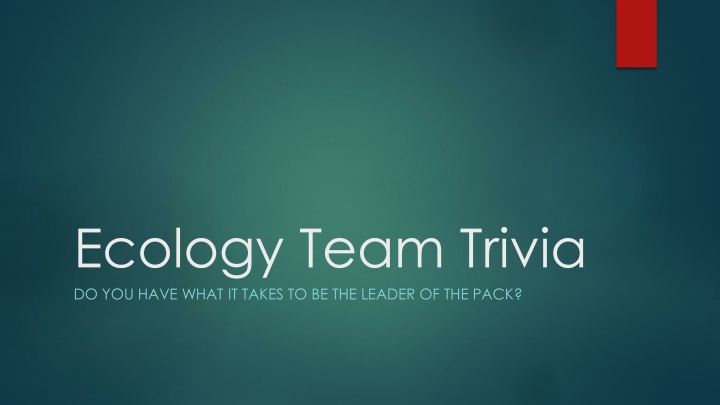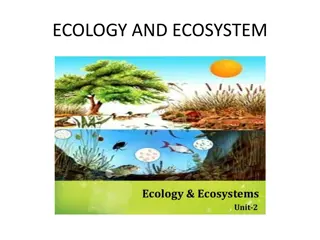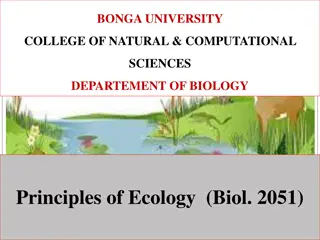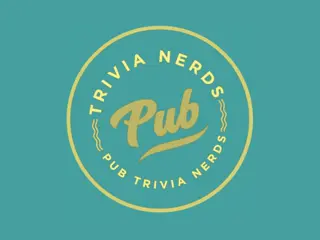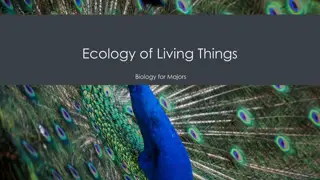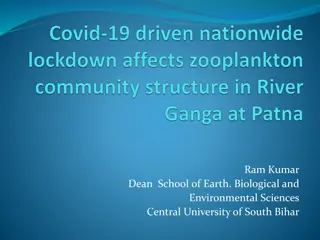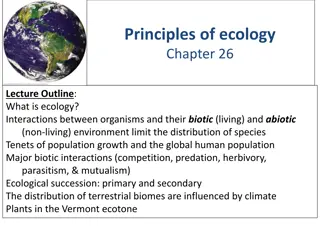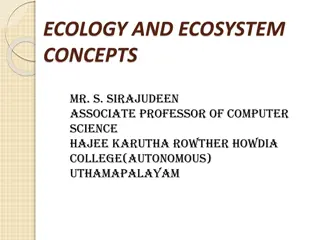Ecology Team Trivia: Test Your Environmental Knowledge!
Explore the world of ecology through a fun team trivia game. Discover key vocabulary related to ecosystems, energy roles, and more. Challenge yourself to become the leader of the pack by mastering ecological concepts. Test your knowledge on topics such as abiotic factors, population dynamics, climate patterns, and energy flow. Sharpen your understanding of producers, decomposers, carrying capacity, and nutrient cycles. Are you ready to delve into the intricate web of nature?
Download Presentation

Please find below an Image/Link to download the presentation.
The content on the website is provided AS IS for your information and personal use only. It may not be sold, licensed, or shared on other websites without obtaining consent from the author.If you encounter any issues during the download, it is possible that the publisher has removed the file from their server.
You are allowed to download the files provided on this website for personal or commercial use, subject to the condition that they are used lawfully. All files are the property of their respective owners.
The content on the website is provided AS IS for your information and personal use only. It may not be sold, licensed, or shared on other websites without obtaining consent from the author.
E N D
Presentation Transcript
Ecology Team Trivia DO YOU HAVE WHAT IT TAKES TO BE THE LEADER OF THE PACK?
Round 1: Vocabulary Point Values: 1-3-5-7 All the nonliving factors present in an ecosystem
Round 1: Vocabulary Point Values: 1-3-5-7 Made up of all members of the same species in an area.
Round 1: Vocabulary Point Values: 1-3-5-7 Averages of weather and precipitation
Round 1: Vocabulary Point Values: 1-3-5-7 The largest population that an area can support
carrying capacity
Round 2: Energy Roles Point Values: 2-4-6-8 Organism responsible for returning nutrients to the soil
Round 2: Energy Roles Point Values: 2-4-6-8 MOST energy enters the ecosystem through which type of organism?
Round 2: Energy Roles Point Values: 2-4-6-8 Which type of organism can create its own food using energy from the sun?
Round 2: Energy Roles Point Values: 2-4-6-8 Which two types of organism must eat to obtain energy?
consumers & decomposers
Round 3: Interactions Point Values: 3-5-7-9 Parasitism, Mutualism and Commensalism are all examples of what?
Round 3: Interactions Point Values: 3-5-7-9 A family of fleas living on a stray cat is an example of what type of interactions?
Round 3: Interactions Point Values: 3-5-7-9 Kingfishers and crows eat the similar diets, and can often be seen in the same habitat. What type of interaction do Kingfishers and crows have?
Round 3: Interactions Point Values: 3-5-7-9 What type of interaction would you expect a mongoose and a chicken to have?
predation (predator/prey)
Half Time Question 2 points awarded per correct response List the ecological levels of organization in order from smallest to largest.
Individual/Species Population Community Ecosystem/Habitat Biome Biosphere
Round 4 : Relationships Point Values: 1-3-5-7 What s our ISM? I am an oxpecker who rides on the back of rhinos. I eat ticks from the rhinos back and alert them to predators.
Round 4 : Relationships Point Values: 1-3-5-7 What is our ISM? I am a heartworm that has developed in the heart of a dog. I take nutrients from the dog s blood and can cause major health problems and sometimes death.
Round 4 : Relationships Point Values: 1-3-5-7 What is our ISM? I am a tree sloth. I have algae growing on my back. The algae acts as camouflage for me as I make my way through the rainforest trees.
Round 4 : Relationships Point Values: 1-3-5-7 What is our ISM? I am an orchid. I grow and live inside a bromeliad plant where I can get all the nutrients and water I need. The bromeliad is not harmed nor helped by my presence.
Round 5 : Studying Populations Point Values: 2-4-6-8 If I am examining the tracks of a wolf pack to determine the population size, what method of observation an I using?
Indirect observation
Round 5 : Studying Populations Point Values: 2-4-6-8 If I count 15 butterflies in a garden measuring 3 square meters, what is the population density of butterflies in the garden?
5 butterflies per square meter
Round 5 : Studying Populations Point Values: 2-4-6-8 What is the best method to use if I wanted to estimate how many roses are growing in my rose garden?
Round 5 : Studying Populations Point Values: 2-4-6-8 What method is best for estimating the size or and flight patterns of a large flock of migratory birds?
mark and recapture
